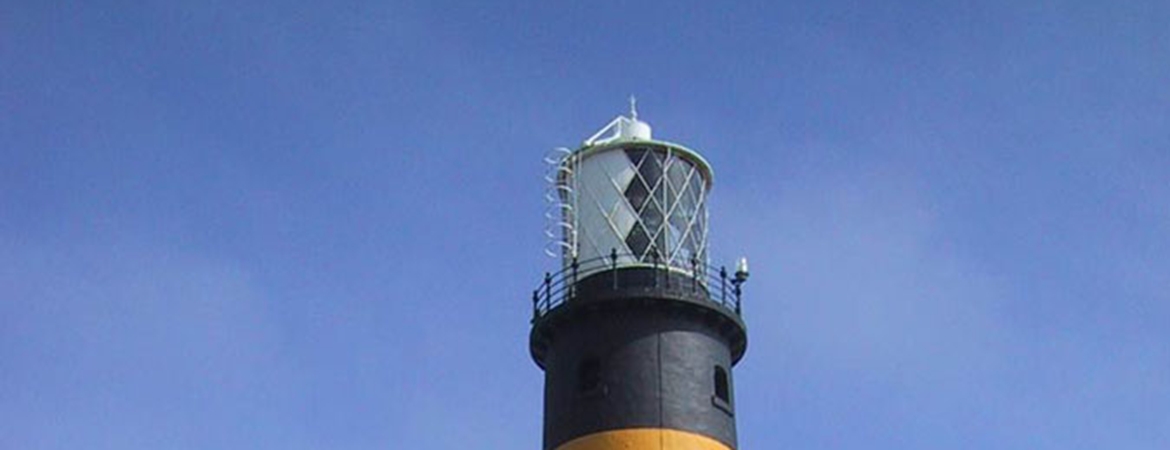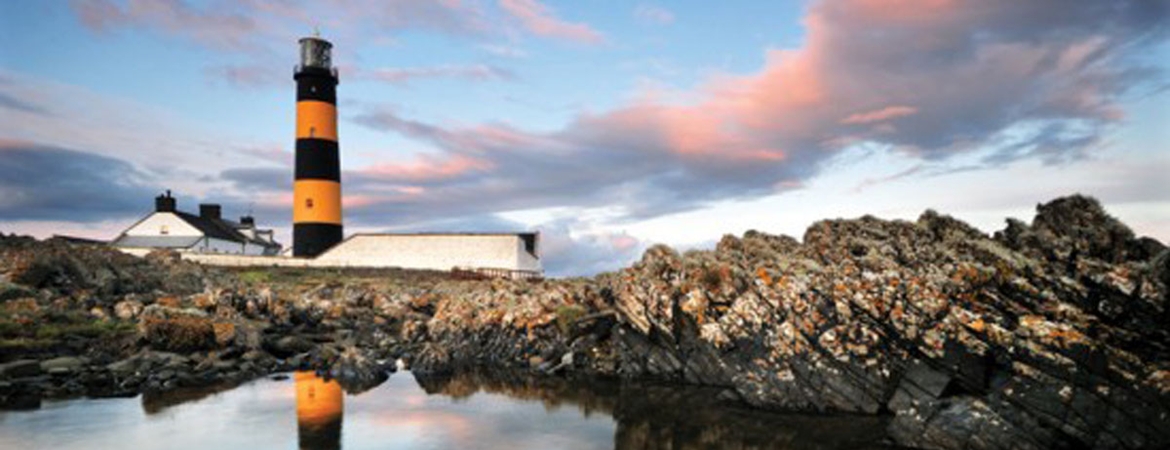 |
St. John's Point Lighthouse is one of 70 lighthouses operated by the Commissioners of Irish Lights around the coast of Ireland and plays a vital role in maritime safety. It is also one of twelve lighthouses which make up Great Lighthouses of Ireland, a new all-island tourism initiative. Visitors from home and abroad now have the chance to visit or stay in a lighthouse and to find out about our history and heritage, to appreciate the spectacular natural world around us, to discover the technology at work today and to engage with our coastal communities. With aspects to appeal to people of all ages and interests, Great Lighthouses of Ireland offers memorable and enriching experiences and creates appreciation of the role of lighthouses past, present and into the future. To find out more about Great Lighthouses of Ireland click here |
History
A lighthouse at St John's Point, co Down was approved by the Corporation for Preserving and Improving the Port of Dublin (the Ballast Board) in 1839. Capt. P. R. Browne, a local landlord, was the building contractor and the foundation stone was laid by the Marquis of Downshire. It appears that work progressed rapidly but there was a delay in commissioning the light. The original station layout consisted of a 45 foot high tower, painted white, and two dwellings designed by George Halpin, the Ballast Board's Inspector of Works and Inspector of Lighthouses. A rock-cut boat landing place was provided to the south-east.
The light was first established on 1st May 1844, with an occulting character (45 seconds illuminated, 15 seconds dark) 18.9 m (62 feet) above high water, and a range of 12 miles. The light was changed from white to red on 1st July 1860.
From 27th May 1875 the light source was converted from oil to coal gas supplied from a gas plant, complete with two gasometers, tank and coal storage, at the station.
As a result of a recommendation to improve the marking of the Co Down coast, the height of the tower was increased to 102 feet, on top of which the present diamond pane lantern was erected, raising the height of the light to 36.5m (120 feet) above high water. In addition a fog signal and an auxiliary light over Dundrum Bay were established from 1st July 1893. The auxiliary light was established in one of the third floor windows of the tower showing a fixed (non-flashing) light, white from 064° to 084° and red from 084° to land. The siren fog signal had a character of 2 blasts every 60 seconds (2.5 seconds blast, 5 seconds silence, 2.5 seconds blast, 50 seconds silence = 60 seconds). These improvements necessitated building an engine house for the fog signal, and two extra dwellings to accommodate the increase in station personnel. This work was supervised by the Board's Engineer, Wm. Douglass.
In 1902 the colour of the tower was changed by adding three black bands.
In 1908 the main light was further improved by the installation of the present bi-form 920mm annular lens. The gas jet burners were replaced with incandescent vaporised paraffin burners. The colour of the light was changed from red to white, with a character of two flashes every 7.5 seconds. The Board's Engineer at this period was C.W. Scott.
The auxiliary light was converted to paraffin vapour burner on 18th October 1910.
The colour of the tower was changed again in 1954, this time to black with two yellow bands. The dwellings were renovated at this time also.
When domestic electricity was supplied to the Keepers' dwellings it was decided to convert the auxiliary light to electric and, at the same time on 5th September 1957, the 084° bearing was altered to 078°.
On 18th February 1981 the main light was converted to electric and an electric horn fog signal replaced the siren. The characters of both the light and fog signal remained the same. On 11 January 2011 the fog signal was permanently disestablished. The light continues to be exhibited in poor visibility during daylight hours.
The lighthouse was automated and the Keepers withdrawn on 31st May 1981. A part-time Attendant was appointed and took charge of the station.
From 27 January 1982 the character of the auxiliary light was changed from fixed to Flashing White and Red every 3 seconds (one second flash and two seconds dark).





